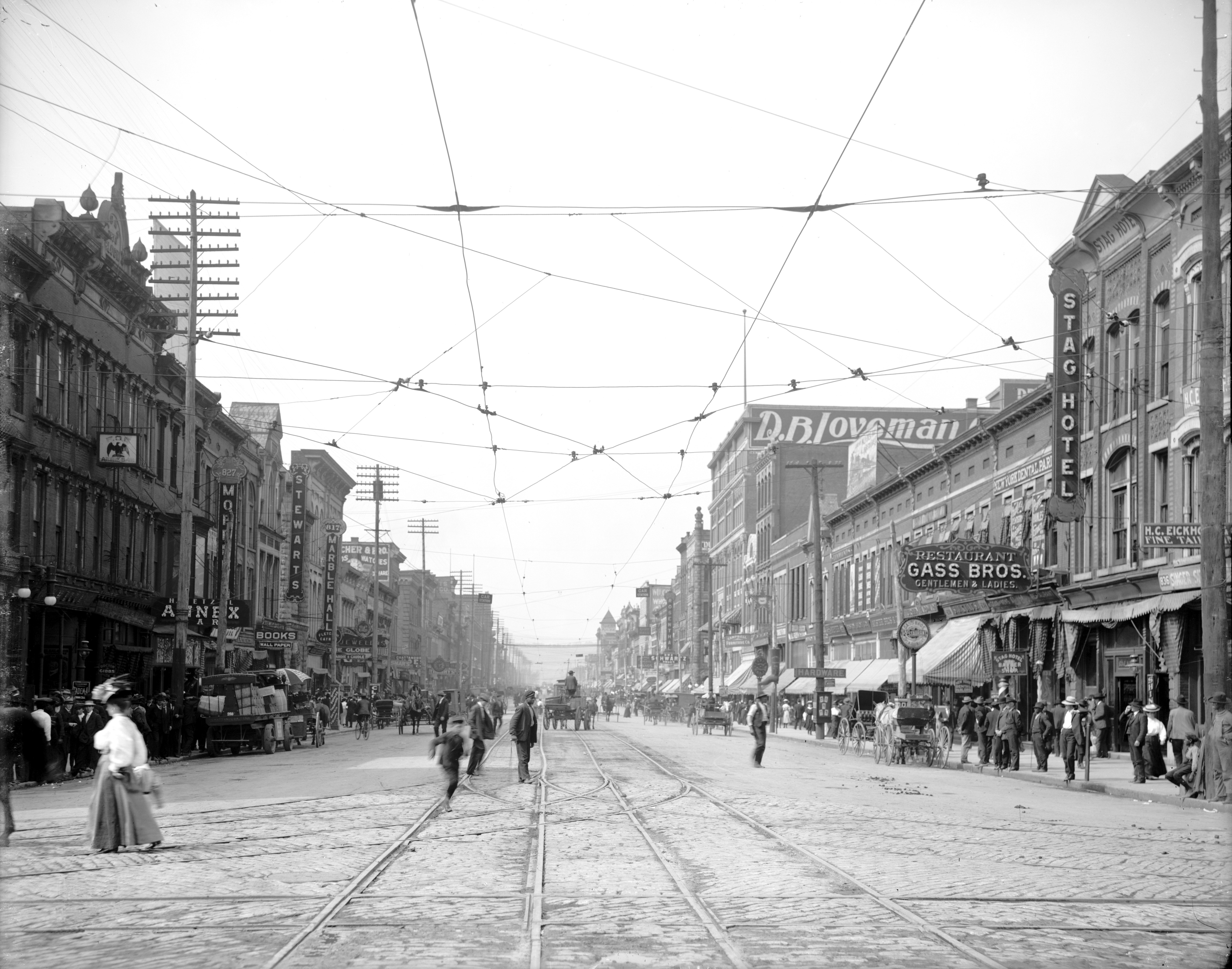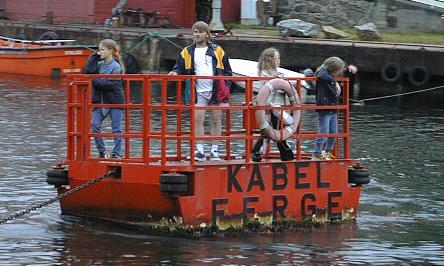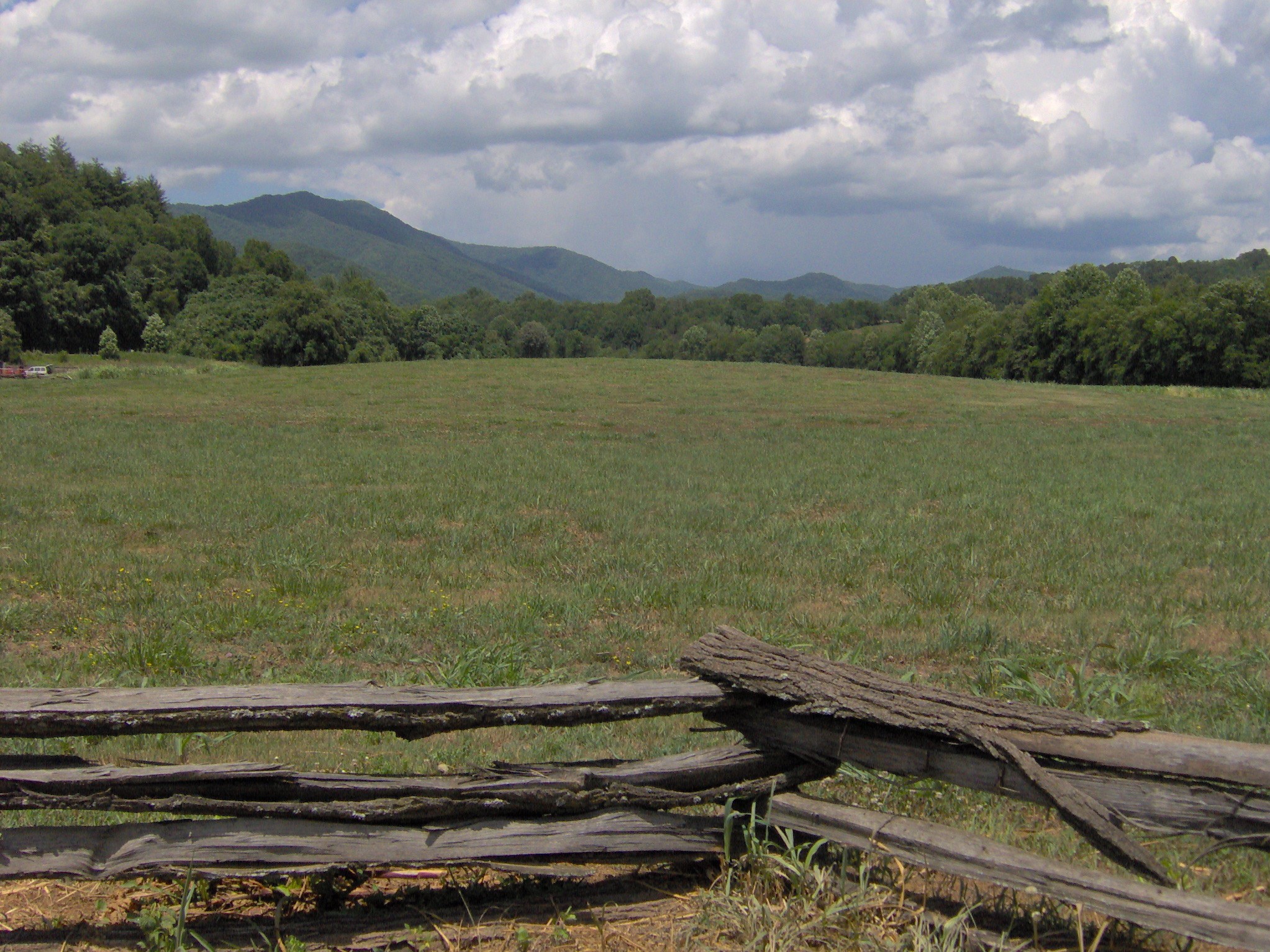|
Ross's Landing
Ross's Landing in Chattanooga, Tennessee, is the last site of the Cherokee's 61-year occupation of Chattanooga and is considered to be the embarkation point of the Cherokee removal on the Trail of Tears. Ross's Landing Riverfront Park memorializes the location, which is listed on the National Register of Historic Places. History The landing was named for John Ross, later principal chief of the Cherokee Nation. In 1816 Ross settled at the site along the Tennessee River above Chattanooga Creek. There he established a trading post on the northern border of the Cherokee Nation, across the river from the United States of America. This area became known as "Ross's Warehouse," and "Ross's Ferry" (and alternatively, "Ross's Landing"). It was known to those passing through the area to have the best conditions for a river flatboat crossing. Ross operated a swing ferry across the river that was anchored on McClellan Island. In 1826 Ross sold his land to a Methodist minister, Nich ... [...More Info...] [...Related Items...] OR: [Wikipedia] [Google] [Baidu] |
Chattanooga, Tennessee
Chattanooga ( ) is a city in Hamilton County, Tennessee, United States, and its county seat. It is located along the Tennessee River and borders Georgia (U.S. state), Georgia to the south. With a population of 181,099 in 2020, it is Tennessee's List of municipalities in Tennessee, fourth-most populous city and one of the two principal cities of East Tennessee, along with Knoxville, Tennessee, Knoxville. It anchors the Chattanooga metropolitan area, Tennessee's fourth-largest metropolitan statistical area, as well as a larger three-state area that includes southeastern Tennessee, northwestern Georgia, and northeastern Alabama. Chattanooga was a crucial city during the American Civil War due to the multiple railroads that converge there. After the war, the railroads allowed for the city to grow into one of the Southeastern United States' largest heavy industrial hubs. Today, major industry that drives the economy includes automotive, advanced manufacturing, food and beverage pro ... [...More Info...] [...Related Items...] OR: [Wikipedia] [Google] [Baidu] |
Cable Ferry
A cable ferry (including the types chain ferry, swing ferry, floating bridge, or punt) is a ferry that is guided (and in many cases propelled) across a river or large body of water by cables connected to both shores. Early cable ferries often used either rope or steel chains, with the latter resulting in the alternative name of chain ferry. Both of these were largely replaced by wire cable by the late 19th century. Types Cable ferries can be typified by their size and construction, their usage (passenger, animal, vehicle) and requirements (length of crossing, amount of other shipping), their cables (wire rope, chain, or both), and their propulsion (water current, engine, manual). The choice of cable depends partially on the requirements of the crossing but also on the historical context. For example, the numerous cable ferries across Australian and Canadian rivers seem to use wire rope exclusively, whereas the older crossings across busy tidal rivers in England all use chain. ... [...More Info...] [...Related Items...] OR: [Wikipedia] [Google] [Baidu] |
Protected Areas Of Hamilton County, Tennessee
Protection is any measure taken to guard something against damage caused by outside forces. Protection can be provided to physical objects, including organisms, to systems, and to intangible things like civil and political rights. Although the mechanisms for providing protection vary widely, the basic meaning of the term remains the same. This is illustrated by an explanation found in a manual on electrical wiring: Some kind of protection is a characteristic of all life, as living things have evolved at least some protective mechanisms to counter damaging environmental phenomena, such as ultraviolet light. Biological membranes such as bark on trees and skin on animals offer protection from various threats, with skin playing a key role in protecting organisms against pathogens and excessive water loss. Additional structures like scales and hair offer further protection from the elements and from predators, with some animals having features such as spines or camouflage servi ... [...More Info...] [...Related Items...] OR: [Wikipedia] [Google] [Baidu] |
Parks In Tennessee
A park is an area of natural, semi-natural or planted space set aside for human enjoyment and recreation or for the protection of wildlife or natural habitats. Urban parks are urban green space, green spaces set aside for recreation inside towns and cities. National parks and country parks are green spaces used for recreation in the countryside. State parks and provincial parks are administered by sub-national government states and agencies. Parks may consist of grassy areas, rocks, soil and trees, but may also contain buildings and other artifacts such as monuments, fountains or playground structures. Many parks have fields for playing sports such as baseball and football, and paved areas for games such as basketball. Many parks have trails for walking, biking and other activities. Some parks are built adjacent to bodies of water or watercourses and may comprise a beach or boat dock area. Urban parks often have benches for sitting and may contain picnic tables and barbecue gr ... [...More Info...] [...Related Items...] OR: [Wikipedia] [Google] [Baidu] |
National Register Of Historic Places In Tennessee
National may refer to: Common uses * Nation or country ** Nationality – a ''national'' is a person who is subject to a nation, regardless of whether the person has full rights as a citizen Places in the United States * National, Maryland, census-designated place * National, Nevada, ghost town * National, Utah, ghost town * National, West Virginia, unincorporated community Commerce * National (brand), a brand name of electronic goods from Panasonic * National Benzole (or simply known as National), former petrol station chain in the UK, merged with BP * National Book Store, a bookstore and office supplies chain in the Philippines * National Car Rental, an American rental car company * National Energy Systems, a former name of Eco Marine Power * National Entertainment Commission, a former name of the Media Rating Council * National Motor Vehicle Company, Indianapolis, Indiana, USA 1900–1924 * National Radio Company, Malden, Massachusetts, USA 1914–1991 * National Supermarket ... [...More Info...] [...Related Items...] OR: [Wikipedia] [Google] [Baidu] |
Geography Of Chattanooga, Tennessee
Geography (from Ancient Greek ; combining 'Earth' and 'write', literally 'Earth writing') is the study of the lands, features, inhabitants, and phenomena of Earth. Geography is an all-encompassing discipline that seeks an understanding of Earth and world, its human and natural complexities—not merely where objects are, but also how they have changed and come to be. While geography is specific to Earth, many concepts can be applied more broadly to other Astronomical object, celestial bodies in the field of planetary science. Geography has been called "a bridge between natural science and social science disciplines." Origins of many of the concepts in geography can be traced to Greek Eratosthenes of Cyrene, who may have coined the term "geographia" (). The first recorded use of the word Geography (Ptolemy), γεωγραφία was as the title of a book by Greek scholar Claudius Ptolemy (100 – 170 AD). This work created the so-called "Ptolemaic tradition" of geography, w ... [...More Info...] [...Related Items...] OR: [Wikipedia] [Google] [Baidu] |
Cherokee History
Cherokee history is the recorded history, written and oral tradition, oral lore, traditions, and historical record maintained by the living Cherokee people and their ancestors. In the 21st century, leaders of the Cherokee people define themselves as those persons enrolled in one of the three List of federally recognized tribes, federally recognized Cherokee tribes: The Eastern Band of Cherokee Indians, The Cherokee Nation, and The United Keetoowah Band of Cherokee Indians. The first live predominantly in North Carolina, the traditional heartland of the people; the latter two tribes are based in what is now Oklahoma, and was Indian Territory when their ancestors were forcibly relocated there from the Southeast. The Cherokee people have extensive written records, including detailed genealogical records, preserved in the Cherokee language which is written with the Cherokee syllabary, and also in the English language. Origins The Cherokee are members of the Iroquoian language-fami ... [...More Info...] [...Related Items...] OR: [Wikipedia] [Google] [Baidu] |
Tennessee Aquarium
The Tennessee Aquarium is a non-profit public aquarium located in Chattanooga, Tennessee, United States. It opened in 1992 on the banks of the Tennessee River in downtown Chattanooga, with a major expansion added in 2005. The aquarium, which has been accredited by the Association of Zoos and Aquariums (AZA) since 1993, is home to more than 12,000 animals representing almost 800 species. More than 20 million people have visited the facility, with the twenty-millionth visitor arriving in March 2013. It is consistently recognized as one of the country's top public aquariums. Exhibits The Tennessee Aquarium's exhibits are housed in two structures, the original River Journey building which opened in 1992 and the neighboring Ocean Journey expansion, which opened in 2005. River Journey The River Journey facility is a 130,000 square foot structure having a floor area approximate to that of a twelve-story building. It contains a total of , and was the largest freshwater aquarium i ... [...More Info...] [...Related Items...] OR: [Wikipedia] [Google] [Baidu] |
Indian Territory
Indian Territory and the Indian Territories are terms that generally described an evolving land area set aside by the Federal government of the United States, United States government for the relocation of Native Americans in the United States, Native Americans who held aboriginal title, original Indian title to their land as an independent nation. The concept of an Indian territory was an outcome of the U.S. federal government's 18th- and 19th-century policy of Indian removal. After the Indian Territory in the American Civil War, American Civil War (1861–1865), the policy of the U.S. government was one of Cultural assimilation of Native Americans#Americanization and assimilation (1857–1920), assimilation. Indian Territory later came to refer to an Territories of the United States#Formerly unorganized territories, unorganized territory whose general borders were initially set by the Nonintercourse Act of 1834, and was the successor to the remainder of the Missouri Territory a ... [...More Info...] [...Related Items...] OR: [Wikipedia] [Google] [Baidu] |
Cherokee Indians
The Cherokee (; , or ) people are one of the Indigenous peoples of the Southeastern Woodlands of the United States. Prior to the 18th century, they were concentrated in their homelands, in towns along river valleys of what is now southwestern North Carolina, southeastern Tennessee, southwestern Virginia, edges of western South Carolina, northern Georgia and northeastern Alabama with hunting grounds in Kentucky, together consisting of around 40,000 square miles. The Cherokee language is part of the Iroquoian language group. In the 19th century, James Mooney, an early American ethnographer, recorded one oral tradition that told of the tribe having migrated south in ancient times from the Great Lakes region, where other Iroquoian peoples have been based. However, anthropologist Thomas R. Whyte, writing in 2007, dated the split among the peoples as occurring earlier. He believes that the origin of the proto-Iroquoian language was likely the Appalachian region, and the split be ... [...More Info...] [...Related Items...] OR: [Wikipedia] [Google] [Baidu] |
Flatboat
A flatboat (or broadhorn) was a rectangular flat-bottomed boat with square ends used to transport freight and passengers on inland waterways in the United States. The flatboat could be any size, but essentially it was a large, sturdy tub with a hull. A flatboat was almost always a one-way (downstream) vessel, and was usually dismantled for lumber when it reached its destination. Early History The flatboat trade first began in 1781, with Pennsylvania farmer Jacob Yoder building the first flatboat at Old Redstone Fort on the Monongahela River. Yoder's ancestors immigrated from Switzerland, where small barges called weidlings are still common today, having been used for hundreds of years to transport goods downriver. Yoder shipped flour down the Ohio River and Mississippi River to the port of New Orleans. Other flatboats would follow this model, using the current of the river to propel them to New Orleans where their final product could be shipped overseas. Through th ... [...More Info...] [...Related Items...] OR: [Wikipedia] [Google] [Baidu] |









